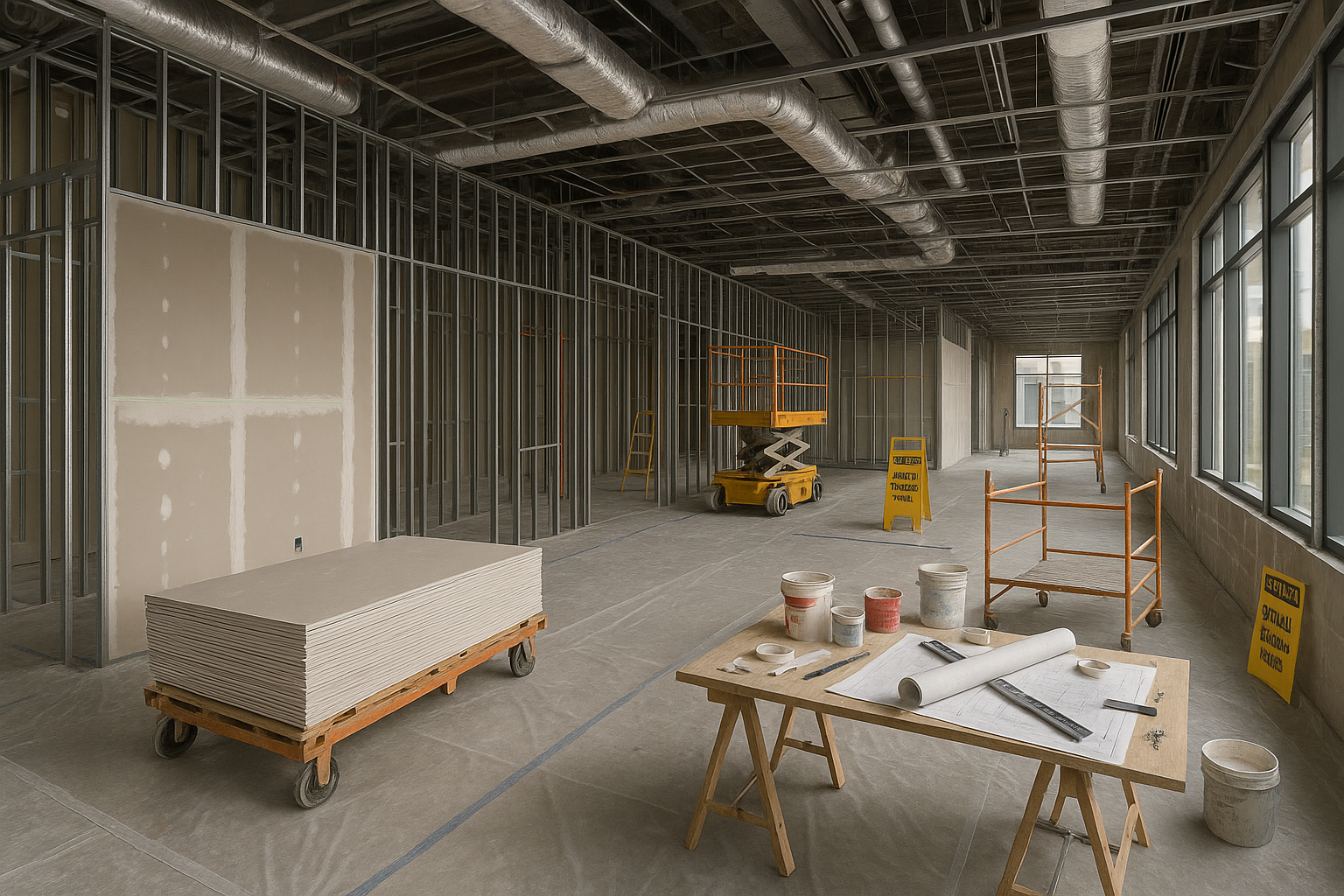
Finish schedules are often one of the most underexamined documents during drywall estimating—yet they can significantly impact material selection, labor productivity, and sequencing. For architects, engineers, and general contractors, understanding the connection between finish specifications and drywall scope is essential for creating accurate budgets and aligning expectations across the project team. If finish requirements aren’t clearly defined and translated into quantifiable drywall scope, the project is at risk for misaligned bids and downstream change orders.
Finish schedules dictate more than paint color. They determine finish level expectations, surface treatments, texture requirements, and sometimes even specialty backing. These choices can dramatically influence cost and labor:
These elements must be clearly scoped and priced up front. When overlooked, they result in underbids and strained field execution.
Estimators and project teams often make the following errors when reviewing finish schedules:
These mistakes lead to quantity adjustments in the field, where cost recovery is much more difficult.
Advanced tools like Active Estimating enable estimators to tag areas with different finish requirements and apply dynamic labor and material factors. This ensures that finish scope is accounted for at the right phase and in the right locations.
Designers often include aesthetic finish requirements without understanding the cost implications. Estimators serve as the bridge—interpreting those finishes and translating them into buildable, priceable scopes. By incorporating finish schedule details into drywall estimating workflows, estimators add immediate value to the project by preventing cost creep and enabling better bid accuracy.
Field teams must also understand the finish-level expectations set during estimating. By tagging areas and documenting rationale in the estimate, drywall scope can be communicated with visual precision. Crews understand where extra time is budgeted—and where expectations are elevated. This ensures scope fidelity and avoids finger-pointing during punch list season.
The drywall scope isn’t just about square footage—it’s about the finish expectations layered on top. Finish schedules should be treated as a primary source of information during estimating, not an afterthought. By tying finish detail to cost early on, project teams can protect their budget, elevate build quality, and ensure alignment from precon to closeout. Tools that blend data with design intent, like Active Estimating, make this possible at scale—delivering the right information to the right people at the right time.
Contact Information:
Active Estimating
508 2nd Street, Suite 208
Davis
California
95616
Rich Schoener
richard@activeestimating.com
(877)
Schedule a personalized demo to see how Active Estimating can work for your specific needs.
